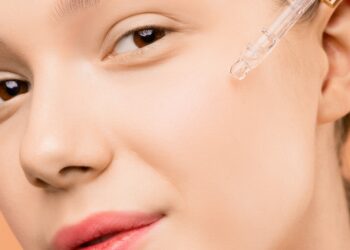It’s no secret that your diet affects the condition of your skin. Eating plenty of antioxidant-rich foods and healthy fats is important for glowing skin. Consuming Dairy, on the other hand, has developed a poor name in recent years.
Dairy-based ingredients, whether consumed as part of a smoothie. The regular cup(s) of tea or coffee, or in the form of butter or yogurt, have been the first to be blamed for health issues such as indigestion and acne. It’s fair to conclude that milk is an important part of our society. As well as our everyday diet, but is it to blame for your skin problems?
Dairy foods and your well-being

The way dairy affects your health as a child varies from how it affects you as an adult. When we are children, but as we get older, our capacity to digest milk diminishes. This is why all of us are lactose intolerant. This causes flatulence, digestion disorders, and skin problems such as acne and skin inflammation, among other things.
Contrary to common opinion, organic dairy is not a poor food category for all. It is a protein food category, and if you do not have a dairy intolerance, you should eat it to your advantage.
Milk isn’t what it used to be (or as nutritious as it used to be), as shown by the number of news stories about adulterated yogurt and growth hormone problems. We are not designed to ingest milk produced by animals for their offspring cows are also often pumped with synthetic hormones, proteins. To growth factors to produce more milk for prolonged periods, which is much worse for our skin and health.
The Effects of Dairy on Your Skin
Acne is one of the most common skin problems associated with dairy. Dermatologists also advise their patients to stop eating dairy for a few weeks before beginning any other treatment. To determine whether their chronic acne is exacerbated by their diet. Cow’s milk often contains substances and hormones that increase the levels of certain hormones in our bodies.
This hormone induces acne, dermatitis, skin irritation, and aggravates rosacea by increasing sebum output. You might, though, actually be lactose intolerant, even though you’re using the purest source of milk. When genuine, raw [hormone-free] milk is used, the adulteration by injected hormones is eliminated, and whether one ever responds to dairy, it is due to an allergy to the food itself.
How to Determine Whether or Not the Body Supports Dairy
To begin, switch to organic dairy and remove all types of dairy outside of your home where there is a high chance of exposure to inorganic options, such as restaurants and other people’s homes. Keep an eye on it for two weeks. It takes the same amount of time for residue from things that aren’t good for you to leave your bloodstream.
If there is no improvement and your gut and skin are still bothering you, remove all types of milk first, monitor for improvements, and then eliminate milk items such as yogurt, cheese, and paneer if necessary. Continue to observe for another two weeks.
Many that have a severe dairy allergy may have to avoid all kinds of dairy. Those with a mild to severe dairy allergy, on the other hand, will be able to keep milk products but must avoid milk.




